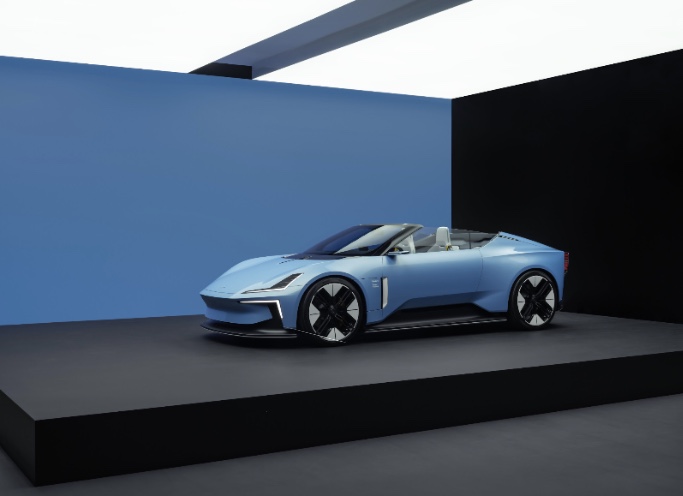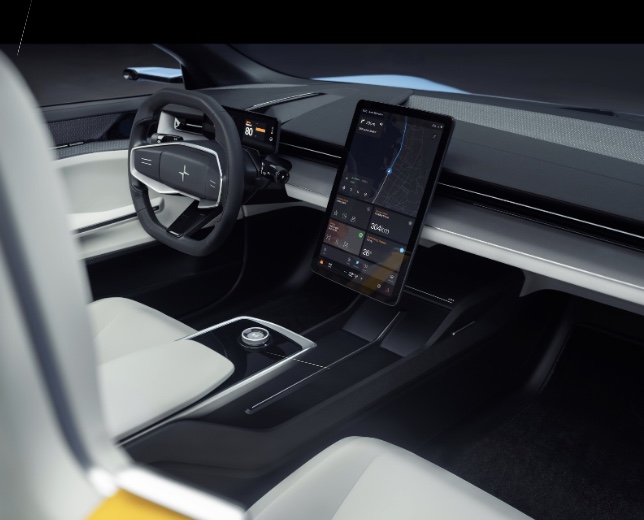The future is electric and emission-free. In this exclusive Instagram Live conversation, Green Living Magazine Publisher Dorie Morales and Courtesy Automotive COO Jason Church talk about all things EV.
Green Living and Church’s shared history goes back through multiple brands like Courtesy Chevrolet and Volvo as the electric vehicle landscape kept changing. Later, in 2020, church caught up with his pinnacle brand Polestar.
“Since then, the OEM (Original Equipment Manufacturer) manufacturers have been eyeing on getting onto the EV bandwagon, and it’s an exciting time to be in the business as we start to see more and more people catch up on EVs,” Church said.

When asked about the current EV trends, Church explained there are two evolutions, split into two subdivisions. One is the “plug-in hybrid EV,” which drives more manufacturers to introduce this beautiful concept because for anyone that has range anxiety (approaching the 20% limit in an EV), can make any driver uneasy, but the idea is getting between 25 and 30 to 40 miles of pure electric every day.
Most people don’t travel more than 19 miles on a daily basis. Church himself drives a plug-in hybrid Jeep, and for a long journey, the Jeep can migrate to gas whenever required. He believes this evolution is going to help change customer habits and make it easier to adapt. Brands like Jeep and its Wrangler and Grand Cherokee models, the Chrysler Pacifica minivan and Volvo all come with plug-in hybrid technology. Imagine waking up to 100% battery every morning, with 30-plus miles of coverage, fully electric and more importantly, sustainable. It’s the best of both worlds.
Jim Rowan, the CEO of Volvo, announced a walk-through of the EX-30, an all-new EV which will be available at the beginning of 2024. It is expected to be priced around $35,000. Talking about the existing models, Church shed light on the Volvo EXE-40 and C-40, both available for easy test drives and an easy buy, he said.
On the other hand, Polestar 3 will be available locally in the U.S. starting in August with a little tweak. Customers will now be able to touch, feel and look at the EV in person rather than online only to make sure it’s the best fit for them. Polestar 4 will also be available around mid-2024 and Polestar 6 is expected in 2026.
Church said a true zero-emission vehicle comes from the manufacturing of the vehicle’s life cycle, including how the products are sourced.

“Everything is taken into account and is recyclable to really get to the point where you could say that the car is manufactured with a zero-emission footprint,” he said. “I definitely know that Polestar is committed to that and is implementing that in some of their future models.”
Polestar has even considered the sustainability of the seat fabric, different from today’s technology that combines plastic and leather, which creates unrecyclable parts. It’s groundbreaking work that is thinking about the complete cycle of the car, from manufacturing to the last mile. Church said it can truly be recycled in a way that cars have never been before.
Furthermore, the software that runs the electronic motors are becoming more efficient as well, so they’re using less energy to get more oomph out of them and more range.
“We’re seeing the motor industry change in front of our eyes,” he said.
Church clarified the EV incentives that have recently changed. The tax credit depended on the size of the battery, and had a cap of $7,500. When the Inflation Reduction Act was passed in 2022, Church said manufacturers wanted to do local production and local sourcing of batteries, which is complicated. Furthermore, if the buyer made too much in salary, they wouldn’t get the rebate. Leasing an EV model not on the tax credit list of approved models is a different story because consumers could still get the rebate without buying the vehicle. All EV’s that are leased get the $7,500 tax credit.
“Leasing has become the hottest new thing in EVs because you get it without any car qualifications whatsoever,” he said. “At the end, there’s no negative equity. It is possible to purchase the car positively at the end if you want.”
Soon enough, Church said people could drive on shorter term leases due to the upcoming EV technology such as Kia’s EV 9 or the Chevy Blazer. It could be an 18- or 24-month lease instead of a 36-month lease. Volvo’s subscription plans can bridge the gap between where they are now, and where they will when the new technology comes out.
“EV’s coming. It’s here to stay. It’s going to grow and consumers are going to win,” he said. “People are going to see more affordability, more choices and a diminishing range anxiety aspect, which is fantastic.”
Read more about the Polestar 6. Find more Technology articles on our website.






